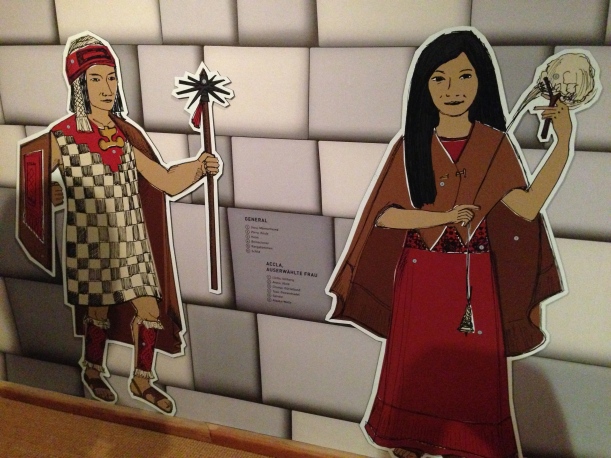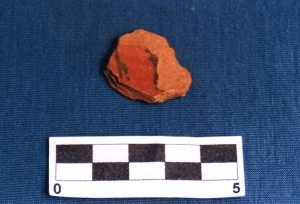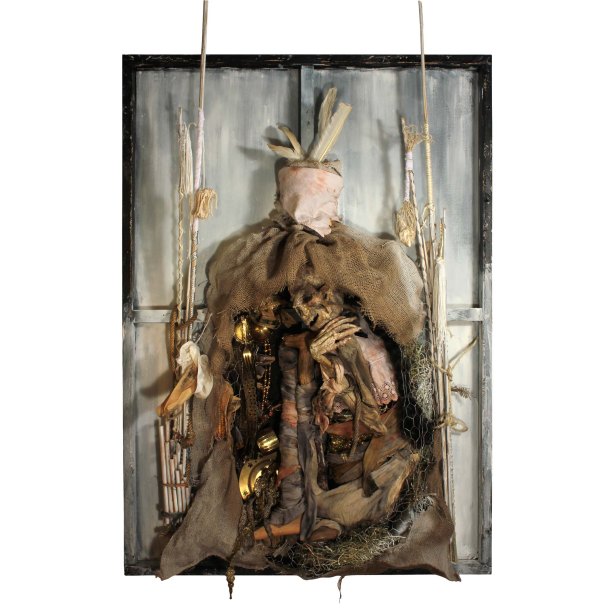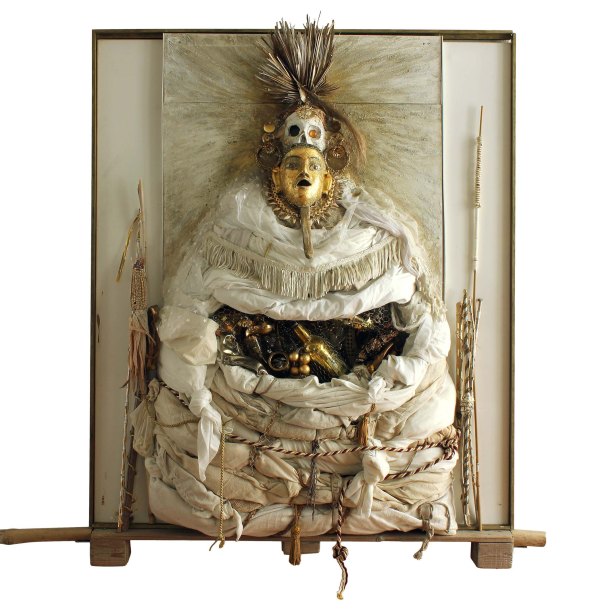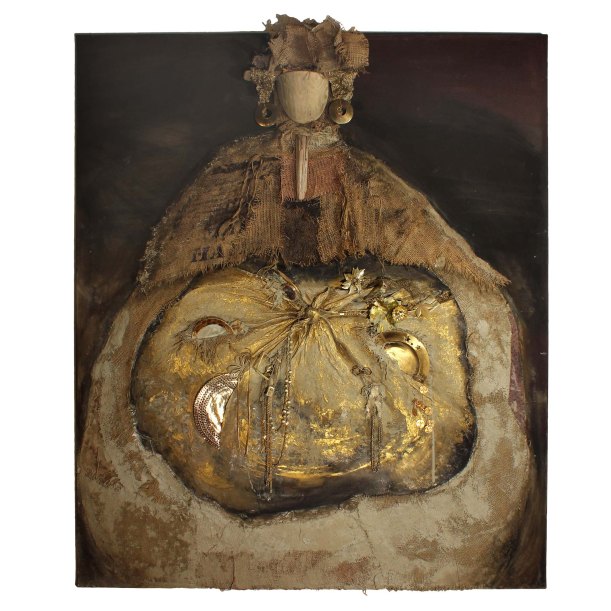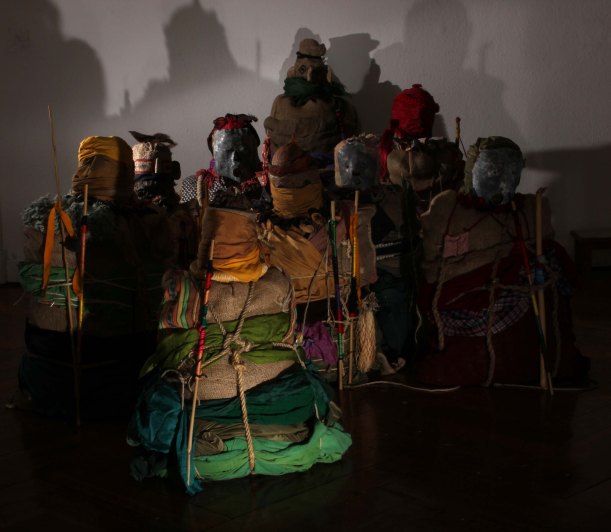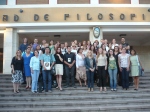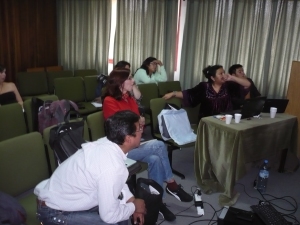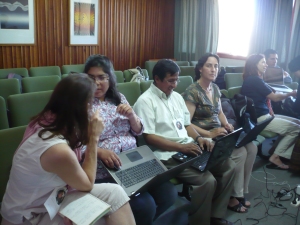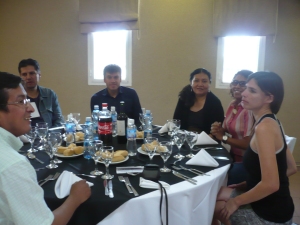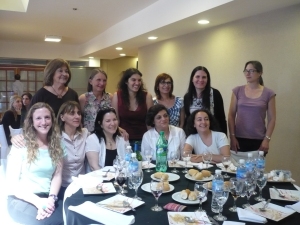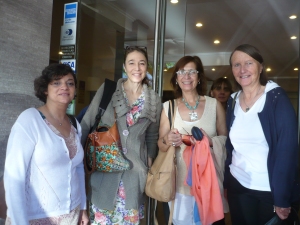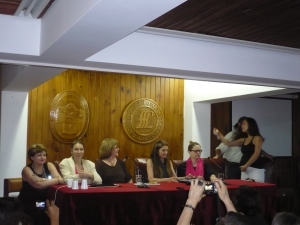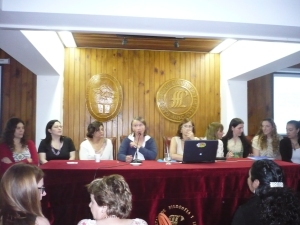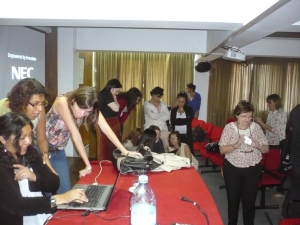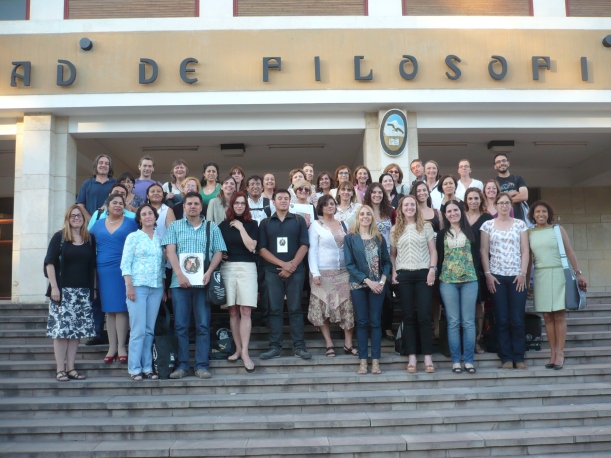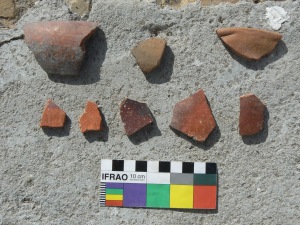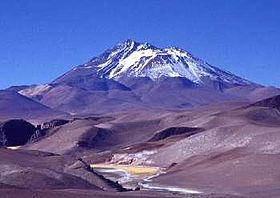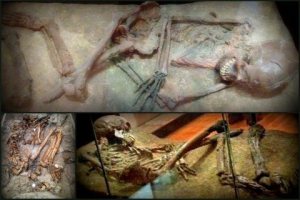Zugegeben, die Ausstellung “INKA – Könige der Anden” in Stuttgart endete am 15.3.2014 – jetzt ist schon äääähh….. Oktober 2014. Woran man sieht wielange Dinge manchmal im Blog liegenbleiben, aus Zeitmangel. Trotzdem möchte ich diese Ausstellung noch einmal besprechen. Erstens ist sie bis zum November 2014 noch in Rosenheim zu sehen und zweitens kamen da bei mir einige Gedanken auf, die ich hier dann doch noch teilen möchte.
Beworben wurde diese Ausstellung als “einmalig”, “die größte in Europa“, sie war eine Landesausstellung des Landes Baden-Württemberg und entstammte dem renommierten Lindenmuseum. Und da das Thema tatsächlich mein Thema ist, war klar, dass ich sie sehen wollte. Und als allererstes fand ich dazu den Kuratoren-Ausstellungstrailer auf Youtube. Ganz sicher bin ich dem Thema Inka persönlich involviert und nicht ganz objektiv, aber im Großen und Ganzen liegt mir einfach am Herzen dass man vermittelt warum Archäologie gesellschaftliche Relevanz besitzt. Warum so eine riesige (aka: auch teure) Ausstellung gesellschaftlich Sinn macht, mal ganz abgesehen von der Schönheit der Objekte und dem Abenteuerfaktor Archäologie.
Der Kuratorentrailer bot vor allem eins: Die Indiana-Jonesierung der Archäologie. Man sei “in die Magazine hinabgestiegen und habe dort staubige Kisten gefunden“. In denen hätte man “unglaubliche Objekte entdeckt”, die man nun in der Ausstellung sehen kann. Undsoweiter. Aha. Ich verstehe die Faszination der Objekte im Depot. Auch ich bekomme zugegebenermaßen schwitzige Hände wenn ich mit archäologischen Objekten arbeite – einfach vor positiver Aufregung. Es ist also durchaus schön, dass man da Objekte entdecken kann – aber welche Bedeutung haben die Objekte denn für uns heute? Was zeigen sie uns, wie verbinden sie uns und die Inka miteinander?
Die Inka waren einer der größten “Staaten” auf amerikanischem Boden vor der Ankunft der Spanier. Ihre durchaus als kolonialistisch zu bezeichnende Eroberungspolitik führte bei den unterworfenen Gruppen zu ganz unterschiedlichen Reaktionen, von Gewalt und Gegengewalt inklusive kompletter Umsiedlung ethnischer Gruppen und Ausrottung, bis zur Aneigung inkaischer Kultur als Ausdruck der Anpassung und, besonders spannend, die Aneignung bestimmter inkaischerKulturelemente zur Verfolgung eigener Gruppeninteressen unter und NACH der inkaischen Herrschaft – also schon zur Zeit der spanischen Eroberung und daran anschließend auch der spanischen Herrschaft. Die Inka und ihr Dunstkreis bieten also reichlich Anknüpfungspunkte für sehr moderne, globalisierte Konzepte und Ideen in unserer eigenen Gesellschaft. Um die ging es jedoch weder in dem Trailer noch in der Ausstellung. Der Titel ist Programm, denn “Könige der Anden” könnte auch anders sein, wenn der Fokus der Austellung anders wäre. “Die andinen Kolonisatoren” etwa, oder: “Heimat & Provinz” oder was auch immer. Aber Könige bedeutet eben auch: Herrschaft. Elite. Und elitäre Objekte – und genau das gibts ja dann auch zu sehen.
Denn die Ausstellung präsentiert hauptsächlich einen schön gemachten, mit wunderbaren Objekten ausgestatteten Überblick über die Kultur der Inka: wo kamen sie her, wie lebten sie, wie eroberten sie andere Gebiete, wie starben sie. Gold, Textilien, Keramik, Bilder. Schöne Fotos andiner Landschaften. Aha-Effekte wenn man lernt dass die Kartoffel aus den Anden stammt. Wer Ausstellungen besucht, vergleicht sich ja oft unwillkürlich mit den dargestellten Gruppen oder Objekten. Vor allem Dinge der Alltagskultur führen automatisch zu Vergleichen. “Die waren weiter entwickelt als andere in Brasilien, die Inka!” oder, bei Mumienbündeln: “Da sind doch Tote drin! Wir tun unsre einfach in die Erde und die konservieren die!” – so in diesem Sinne waren etwa Kommentare in der Ausstellung.Für Kinder gab es einen kleinen Raum zum Spielen und ansonsten vieles zum Staunen: die Nachbildung einer Inka-Mumie auf einer Sänfte etwa. Und viel viel Gold. Wie man sich das eben so vorstellt, so spektakulär und hübsch …. so war es dann auch. Keine Überraschungen, es sei denn man zählt Schönheit als Überraschung.
Über Synkretismus, Aneignung, politische Nutzung von Objekten ging es nur im letzten Teil, in dem die spanische Kolonialisierung im Vordergrund stand. Wie brachte die Gruppe der Inka als Ethnie sich hier ein? Welche Konflikte entstanden? Wie wurden diese materiell umgesetzt und dargestellt? Diese Themen hätte ich mir definitiv auch für die vorspanische Zeit gewünscht denn hier wirkt es als wäre das eine Sache die erst bei Ankunft der Europäer auftritt. Aber auch die Zeit vor den Spaniern war geprägt von der Verhandlung von Machtstrukturen und Synkretismus. Und: das sind Themen die uns heute in unserer globalisierten Welt absolut betreffen. So wie es war, blieb die große Konfliktivität und Aktualität inkaischer Kultur auf der Strecke. Konfliktivität, die sich (wie etwa in den Videofilmchen am Ende der Ausstellung sichtbar) bis in die öffentliche Perzeption der Andenstaaten heute durchzieht, eine unglaubliche Aktualität!
Ganz am Ende, kurz vor dem Verlassen der Ausstellung, da gab es auch so etwas wie Relevanz: nämlich was die Inka den Menschen in den Anden heute bedeuten. Als Vorfahren, als Erbe, als Name, als Kultur. Da war alles dabei, vom Landarbeiter bis zur deutschen Restaurantbesitzerin. Ein ganzes Spektrum von Meinungen. Als Filmformat dargeboten, zog es unglaublich viele Besucher in den Bann, man saß endlos auf Bänken. Und schaute den Kurzinterviews zu. Hier schien auf was wirklich die Bedeutung der Inka ist: nämlich ihr Name heute. Was verbinden die Menschen damit, wer identifiziert sich hiermit und warum? Die Inka sind etwas wie die “Vorfahren” der Peruaner von heuet geworden, zumindest im öffentlichen Bewusstsein. Aus genau dem gleichen Grund identifizieren sich etwa Bolivianer gerade NICHT mit den Inka sondern anderen vorspanischen Gruppierungen und verstehen die Inka häufig als eine Art frühe Kolonisatoren ihres heutigen Nationalstaates. Diese Art ganz konkreter Bedeutungen von Geschichte in der heutigen Zeit fehlen jedoch in der wunderschönen Ausstellung. Dabei wäre doch gerade das ein spannender, auf uns bezogener Aspekt: wie wirkt denn Geschichte auf uns? Ws ziehen wir darum wie instrumentalisieren wir sie? Und nicht nur die “anderen”?
Aber die Aktualität des Themas “Inka” wurde bis auf die Kurzfilme nicht angesprochen. Das europäische Publikum erfährt hier Schönes, Spektakuläres, Informatives. Aber keine
Konflikte. Das ist auch bequem, und hübsch – und sehr sehr schade.
Literaturvorschläge:
Julien, C. & K. Nowack, 2007. Inka. Geschichte, Religion, Kultur. C.H. Beck Verlag.
Earle, R., 2007. The return of the Native. Indians & Myth-making in Spanish America (1810-1930). Duke University Press.
Malpass, M. & S. Alconini (Hrsg.), 2010. Distant provinces in the Inka Empire. Toward a deeper understanding of Inka Imperialism. University of Iowa Press.
Mendez, C., 1996. Incas Sí, Indios No: Notes on Peruvian Creole Nationalism and its contemporary crisis. Journal of Latin American Studies Vol. 28, No. 1, pp. 197-225.
ENGLISH VERSION
Okay, I admit that the exhibition „INCA – Kings of the Andes“ finished in march 2014 in Stuttgart, and now its already….. hm…. Well, October 2014. That shows how long some things stay in this blog without being published. But I would like to write about it, anyway. Because the exhibition can still be seen at Rosenheim until November 2014 and because it stirred thought that I have been harboring for some time, and I would like to share them, even after 7 months waiting to publish them.
The exhibition was marketed as “unique”, the “biggest in Europe” and it was an exhibition on a federal basis, meaning that it had an official impact. Hosted by the famous Lindenmuseum Stuttgart, “INCA” affected my very own investigations. This was MY topic and I was eager to see it. The first thing I found on the web concerning the exhibition was a trailer on YouTube, presenting an interview with the curators of the exhibition. And to be frank: I am NOT being objective on this exhibition because I am so involved in this subject of investigation that I just cant stay on the objective side. And by and large there are issues about archaeology that are important to me and these concern mainly the social relevance of archaeology. And why an enormous (and this means: costly, too) exhibition should focus on relevance as well, and not only on the beauty of the objects it presents and the “adventure of Archaeology”.
The trailer offered one thing, mainly: Archaeology as Indiana Jones. There are sentences like: “we went down to the depots and discovered dusty boxes”. In them, there were “found incredible objects” that can now be seen in the exhibition. Well. Aha. OK. I fully understand the fascination of objects ion the depot. And I admit of getting sweaty hands when working with archaeological objects because I am so excited to do this work. So, it´s great that you can “discover” objects there – but what´s the meaning of these objects for todays life? I mean: when you strip away the scientific or artistic fascination about them??? What do they tell us about the Inca and about ourselves?
The Inca were one of the biggest states on American soil before the arrival of the Spaniards. Their politics of expansion and the colonialist behavior caused very different reactions in the conquered regions, that ranged between violence, counter-violence and the extinction and re-settlement of whole ethnic groups and the appropriation of Inca culture as a means of adaptation. One of the most fascinating chapters of incaic colonization was the use of incaic material cultural elements by local groups in order to pursue their OWN agenda, participating in structures of power through the adoption of certain incaic elements during and AFTER the Inca rule, when Spanish colonization was a major threat to previous pre-Hispanic order. But this was no issue in the trailer nor in the exhibition. The title “INCA – kings of the Andes” shows what this is about, even when it could have been something completely different. What about: “Andean colonisators”? Or: “Home & Province”? But „Kings“ mean: Rulers. Elite. And: elitist obejcts, and of these there was plenty.
Because the exhibition shows mainly a wonderful, beautiful overview of Inca development and culture: Where did they come from, who were they, how did they live, how did they die, what did they conquer? Gold, textiles, ceramics, pictures. Wonderful photos of Andean landscapes. If one visits an exhibition, you often compare objects to your own culture, mainly if they touch themes of everyday culture. So these were some of the commentaries I heard at the exhibition: “They were so much superior to these Brazilian stuff, these Inca!” or, on mummies: “Oh look! They stuffed their dead in there! We put them into the earth and they preserved them!”. For children there was room to play and many objects to marvel on: mummy replicas, and gold gold gold… just as you imagine the Inca Empire – that´s how it was presented. No questions, no surprises; if you don’t count beauty as a surprise.
There was nothing to learn about syncretism, the appropriation or political use of objects. Only in the last section of the exhibition, when it came to the Spanish conquest, syncretism came along. Great, but: it seems that this is something that only went on with the encounter of Europeans and South Americans. And that’s just not true, because the negotiation of power structures was as pre-Hispanic as anything. So, I would have LOVED to see these issues included into the ore-Hispanic sections! And these are issues that border on our own globalized world as well! Inca culture in all its regional aspects is so very very up-to-date! But that’s no issue here. Conflictivity as seen on some videos at the end of the exposition, its so incredibly present until today!
Right on the end, before leaving the exposition, there was something like relevance: videos presented the views of todays residents of the Andes on the Inca. As ancestors, as heritage, as a name and as a culture. And there were many different people: from farm workers to German restaurateurs. A whole bunch of opinions! Offered as videos, it fascinated a lot of people, so everybody was seated on benches viewing these for some time. And that was the moment were relevance was almost palpable: the impact of the Inca today. What do people think about it today? What´s the relevance of Inca to them? Why do they identify with the Inca or why not? The Inca have always been perceived as something as the ancestors of todays Peruvians. And that is, f.e., the reason why Bolivians would NEVER see them as ancestors because they perceive the Inca as some early colonization of their current nation state. They see their ancestors in other prehispanic groups and use them as a political tool to explore their history and future. This tangible aspect of Inca culture TODAY would have deserved much more space in the exhibition. As it was, it was nice. But are these no relevant questions: what does history mean to us? Why do we use it, instrumentalize it? But that was no issue at „INCA“. The European public is not to be bothered with these complicated questions. The museum offered a beautiful, nice exhibtion. But please: no conflicts. That´s really nice – and really unfortunate.
Suggested reading for starters:
Julien, C. & K. Nowack, 2007. Inka. Geschichte, Religion, Kultur. C.H. Beck Verlag.
Earle, R., 2007. The return of the Native. Indians & Myth-making in Spanish America (1810-1930). Duke University Press.
Malpass, M. & S. Alconini (Hrsg.), 2010. Distant provinces in the Inka Empire. Toward a deeper understanding of Inka Imperialism. University of Iowa Press.
Mendez, C., 1996. Incas Sí, Indios No: Notes on Peruvian Creole Nationalism and its contemporary crisis. Journal of Latin American Studies Vol. 28, No. 1, pp. 197-225.

